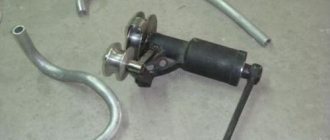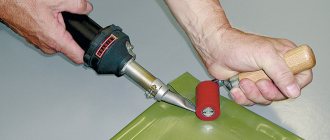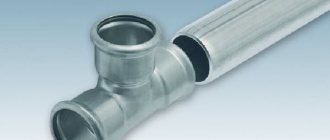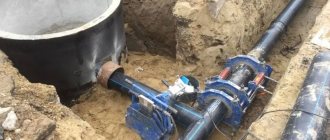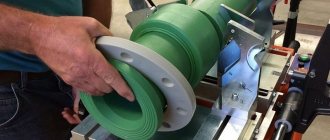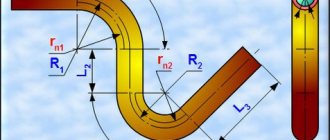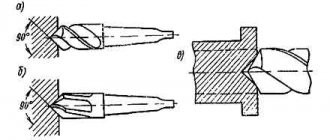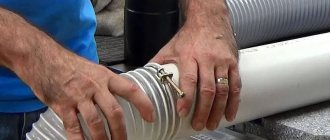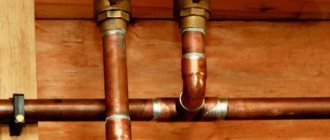Humanity began to use the pipe a very long time ago - its prototype was reed and bamboo, from which the first water pipelines were built. Even in ancient Rome they learned to make pipes from bronze. The first methods of industrial production of such metal products arose in the early 19th century. Currently, millions and millions of tons of product are produced, without which a huge number of branches of human economic activity cannot do.
In the production of rigid metal structures from solid billets, pipe bending is increasingly being used as an alternative to welding and threading. This is due to a number of reasons:
- reduction in material consumption, since there are no welded pipes;
- reduction in labor intensity when creating structures compared to welded and threaded connections;
- better hydro-aerodynamic passage performance;
- no adverse effect on the metal structure compared to welding;
- advantage in sealing relative to threaded connections;
- better appearance of the final product.
Pipe bending is carried out using various methods. The use of a particular technology is determined by the following main factors:
- material of manufacture;
- Wall thickness;
- profile;
- section size (diameter or profile height);
- bend radius;
- required bending accuracy;
- permissible limits of deformation of a bent structure;
- quality indicators of strength and durability at the bending point.
Hot pipe bending
Pipe bending with preheating is used in cases where
when it is not possible to use pipe bending devices and devices for cold bending. The process of bending pipes with preheating is very labor-intensive and is performed with filler. For this purpose, seeded river sand is used without organic inclusions and too fine fractions, which, when exposed to heat, can sinter and burn to the walls. The sand should not be wet to prevent high steam pressure from developing in the pipe when it is heated.
Bending of steel pipes is carried out at a temperature of about 900 °C without overburning and with only one heating - otherwise the quality of the product deteriorates. The size of the heated area is determined by the cross-section and bending radius. At the end of the process, the plugs are removed, the sand is removed, the pipe cavity is cleaned and washed.
What it is?
Pipe bending (go to service) is one of the metalworking methods (go to services), which allows you to obtain pipes of any shape without welding (go to service) and fastenings. This is simpler, helps maintain an aesthetic appearance, is faster, but the main thing is that there is no excessive fragility that the metal receives during welding, and there is tightness - a characteristic that always “suffers” in the classical threaded connection of two or more elements.
The technique has its limitations: not every product can be bent.
Cold pipe bending
Cold bending technology for metal pipes has significant advantages over hot bending. This method is more technologically advanced and several times more productive, which leads to lower costs. The cold method is also used to bend pipes made of non-ferrous plastic metals. Copper and aluminum are highly malleable, which allows products to be bent without heating.
Strictly speaking, pipe bending negatively affects their quality characteristics. Noticeable defects arise, the main ones being:
- reducing the wall thickness on the outside of the bend;
- the appearance of corrugated folds on the inside of the bend;
- distortion of the shape of the pipe passage - from round it turns into oval.
Pipes made of soft metals and with thin walls are especially susceptible to deformation. Therefore, bending thin-walled pipes requires the use of a mechanical stabilizer - this is a mandrel.
A mandrel is a special piece of equipment that, during the bending process, is located in the cavity of the pipe at the point where it bends. It is designed to prevent deformation of the pipe walls during the bending process. The mandrel can be of a rigid or flexible design.
A rigid mandrel is a guide element made of hard metal with a rounded end on the working side. It is tucked directly into the bend point. The flexible mandrel also consists of a solid rod. At one edge there are one or more curving segments made in the form of balls or hemispheres of a special shape.
These structures, located at the bend, ensure that the shape of the passage remains unchanged. Upon completion of the process, the mandrel is pushed out of the bending zone, and the balls additionally calibrate the inner surface. Using a flexible mandrel is quite difficult. To use it, the pipe bender must have an automatic mandrel control device.
Pipe benders using a mandrel, due to their specificity, are only stationary. They are manufactured to operate in both semi-automatic and fully automatic modes. The operation of high-performance, expensive pipe benders is controlled by a CNC system, which monitors all current parameters of the technological process.
Pipe bending methods
Based on the required bend angle, material and diameter of the pipe, bending can be done manually or using special equipment. There are also hot and cold bending, with and without filling the pipe cavity.
Here is a diagram, formulas and recommendations for calculating pipe bending parameters, following which is a guarantee of a good result
After the load is removed, a phenomenon called springing occurs, which is directly proportional to the elastic modulus of the material. The amount of possible deformation also depends on the bending method used and the geometry of the object.
Specifics of hot technology
This method is chosen when it is necessary to bend a pipe with a diameter of 10 cm or more. Pipes are deformed hot, both manually and using mechanisms. There is such a thing as a minimum bend radius.
The length of the pipe zone that needs to be heated is determined based on the pipe diameter and bending angle. In this case, the rounding cannot be less than the pipe diameter multiplied by 3.
Find the length of the heated section using the formula:
L = α x d / 15
In the formula: L is the required length in mm, α is the bending angle in degrees, d is the outside diameter of the pipe in mm, 15 is the coefficient. Let's say a pipe with a diameter of 200 mm needs to be bent at an angle of 60⁰, then L = 60 x 200/15 = 800 mm, i.e. 4 diameters.
The minimum permissible bending radius for water and gas pipes in accordance with the requirements of GOST 3262-92 can be taken from the table
To bend the pipe, it must be heated to 900⁰. The optimal temperature for starting bending is 760⁰, and at the end - 720⁰C. When burned, the strength characteristics of the material deteriorate.
The hot bending process includes several operations:
- making a template;
- sand packing;
- site marking;
- heat;
- bending.
To prevent the cross-section of the pipe from being deformed and sweet spots not forming on its inner part at the bend, the internal space is filled with quartz sand.
The sand is first dried and calcined in order to remove organic impurities at a temperature of 150 to 500⁰, and then passed through a fine sieve with a cell size of 3.3 x 3.3 mm. Before you start stuffing the pipe, you need to plug one end of it.
Wooden or metal plugs with a hole for gases to escape are used as plugs. Fine and wet sand cannot be used, because... the first one is sintered under thermal influence and firmly adheres to the walls of the pipes.
The process of stuffing the pipe is very labor-intensive, so it is transported to the tower and given a slightly inclined or vertical position. Since the quality of the bend is directly dependent on the compaction of the packing, the pipe is continuously tapped throughout the process. A dull sound indicates that the workpiece is well filled.
Before proceeding directly to the main operation, areas of future bends are drawn on a pipe filled with sand, attaching a template. The pipes are heated in furnaces or furnaces. Bend both manually and mechanized.
In the latter case, special plates are used, equipped with thrust posts, with the help of which the heated section of the pipe is fixed, and clamps that serve to hold the end of the pipe on the plate. A cable is put on the opposite end of the pipe, the tension of which with the help of a winch or capstan causes the pipe to bend.
To prevent the pipe walls from deforming, gaskets - straight or curved - are placed in the space of the pipe stand. The free end with the cable attached to it is secured using a stand. During the process, the geometry of the pipe is monitored by periodically applying a template to it.
Having bent the pipe at the desired angle, the plugs are removed from it by burning or simply knocking them out. The sand is poured out, the pipe is cleaned and washed. Perform a final bend check using a template.
Cold bending
To change the configuration of pipes of small diameters, various manual devices are used; for large diameters, mechanized pipe benders are used. At home, bending of water and gas steel pipes used in the construction of water supply and heating systems is most often required.
Bending a pipe at 90⁰ is called a bend, 180⁰ is a roll, with the formation of a ledge is a weft, and in the form of a loop is a bracket.
If bending pipes will be done rarely, it is enough to stock up on the simplest devices. A metal plate with holes into which pins are installed depending on the radius (Fig. 2) or a mandrel - a vertically installed double plane-parallel plate with variations in the bend angle (Fig. 3)
There are other devices for manual bending. At home, to make a coil for heating water, a stainless steel tube with a diameter of about 20 mm is simply wound onto a piece of large diameter pipe. First, a bracket is welded onto a large pipe, placed on supports and clamped.
The tube is tightly filled with sand and closed with plugs, then inserted into the bracket and winding begins. The pipe used as a template needs to be twisted, so it will require the efforts of at least two people. Having finished winding, the coil is leveled.
Using such a device, pipes with a diameter of up to 2 cm are bent. It is attached to the workbench using a plate (1) and a hub. The template roller (6) is fixed on the common axis of the plate and the hub. The movable roller (2) is fixed by a bracket (4) having a handle (3). The pipe is placed between the rollers so that its end fits into the clamp (7). The bracket is rotated around the template using the handle until the desired bend angle is obtained.
Bending a pipe made of stainless steel or other material at home can be done using the simplest device. It is advisable to use it for small volumes of work.
You can build a simple mechanical pipe bending machine with your own hands, especially if you have welding skills and are familiar with a welding machine:
To make a primitive pipe bending device, you need a concrete slab, metal pins and a hammer drill. The slab is divided into cells 40 x 40 or 50 x 50 mm. Using a puncher, holes are drilled in the corners of the cells and pins are inserted into them.
The tubular product is inserted between the pins and, applying force, is bent. The accuracy with this bending method is not ideal, but it is quite sufficient for using the workpiece at home. For bending with higher precision, you can use a device made on the basis of a jack.
To make a hydraulic bending machine, you need a jack that can withstand a 5-ton load, a strong base and pins. The pipes are bent using shoes. The size of these elements must correspond to the parameters of the bent pipe
To prevent the internal lumen of the pipe from deforming, means are used to counteract this process from the inside. Sand is most often used as internal limiters. In this case, a plug is inserted into one end of the pipe, sand is poured through the other, and then it is plugged with a plug. Next, bending is performed.
Sometimes the limiter is a spring specially made for this purpose. For winding, wire with a diameter of 1 to 4 mm is used. The spring should fit freely into the pipe at the bend point; a portion of the wire is left outside.
The hydraulic system of hand tools, portable and stationary machines significantly facilitates the bending process and accelerates the process of pipe deformation:
After the bend is completed, the spring is removed by pulling the wire. When working with a pipe with a square cross-section, wire with the same cross-section is selected to make a spring.
A bundle of wire consisting of separate segments, which are pushed inward one at a time to the point of future bending, is also suitable for this purpose. After the operation is completed, the segments are also removed one by one. You can manually bend a stainless pipe with a cross-section of up to 4 cm and a wall thickness of 0.3 cm.
Common methods of manual bending of pipes: with rolling, by winding, on two supports, by bending with drawing. The latter method is used for seamlessly drawn thin-walled pipe material. In this way, short pipes are bent at a small angle.
To work with large diameters, professional equipment is required. There are pipe bending machines equipped with a mandrel. This structural element is an ordinary metal rod.
Pipe bending machines can bend pipes with different geometries and cross-sectional sizes. This is universal equipment, because... It is possible to bend products with a wide range of diameters and from different materials, from carbon steel to pipes made of non-ferrous metals. The most complex machines are electronically controlled
Before starting the bending process, it is placed inside to prevent deformation of the pipe walls. The mandrels included in the kit have different sections, so you can choose the one you need for a specific diameter of pipe products.
Portable pipe benders
The process of bending pipes directly at the construction site is most conveniently carried out using portable pipe benders of various designs:
- Lever pipe benders. Due to the large shoulder, it is possible to perform the necessary actions solely by human muscle effort. In products made of ductile metal, including stainless steel with a cross-section of up to 3/4 inch, they allow bending up to 180°.
- Crossbow type pipe benders. The product is placed on two support points rotating around its own axes. A bending shoe connected to a moving rod applies force to that part of the pipe that is located between the supports. These easily portable pipe benders are capable of bending a stainless steel pipe with a diameter of up to 100 mm at an angle of up to 90°. The rod that creates pressure can be designed as:
VIEW Portable pipe benders on AliExpress →
- mechanical screw;
- hydraulic with manual drive;
- hydraulic with electric drive.
- Electric pipe benders. In them, pipe bending is carried out on replaceable bending segments of various radii. Here, using a rotary mandrel, the workpiece is bent at a certain angle.
Positive properties of this tool:
- versatility, which is provided by a replaceable set of segments and rotary mandrels for different pipe sections;
- bending angle up to 180°;
- automatic operation without additional actions;
- smooth change of speed, presence of reverse;
- virtual absence of bending deformation, thanks to the impeccable coordination of all equipment elements and the necessary feed dynamics;
- ease of use, easy replacement of attachments;
- high performance;
- compactness and low weight, thanks to the high drive power.
In the absence of a power supply, such pipe benders are provided with a drive powered by a built-in battery.
Types of pipe benders
All types of pipe benders are divided into machine-made and portable. The choice depends on the operating conditions, type of material and volume of work. There are the following types of machine pipe benders:
- crossbow;
- electrical;
- electric.
The last type of pipe bender is the most technologically advanced, easy to use and productive. In such an installation, nozzles can be easily changed and modes adjusted. The electrical device provides full automation, so no additional human intervention is required. The powerful engine allows for maximum performance. At the same time, the pipe bender is lightweight and compact in size. This is a universal device that works with various types of pipes.
Machine pipe bending
The most common type of pipe bending machine is the classic three-roller (three-roll) roller pipe bender.
It uses a method of cold deformation of metal, which is called rolling. A machine of this type can work with any metals, from non-ferrous to titanium alloys. It can easily handle bending of round and oval tubular products, but at the same time it is also excellent at bending square, rectangular and even triangular cross-sections. VIEW Pipe bending machine on AliExpress → Bending a metal profile does not pose any problem for such a machine, just like bending a profile pipe. The versatility of this type of equipment is due to the fact that rolling is essentially the deformation of a material in a certain direction. This method can be classified as the most general type of metal bending. The bending of the profile pipe is ensured by installing the required shape (caliber) of rollers or rollers.
The advantages of such a machine include the ability to produce a bent profile of great length - more than 5 meters, which is often necessary in construction. In addition, the workpiece can be bent at an angle of up to 360 degrees - a full circle. Bending of large-diameter pipes is carried out on electric machines with the following bending principle: first, one end of the workpiece is installed in a special gripper, and then wound onto a block of the required radius.
Such machines allow you to realize precise bending angles (up to one degree). This is ensured either by simple mechanical means, or by setting parameters digitally with control of the entire process on a monitor on highly automated complexes. The machines are used only in factory conditions.
Pipe bending machines using the rolling method
Pipe benders and pipe bending machines operating by the rolling method are widely used in the construction industry, as well as in small-scale and piece production. The operating principle of pipe benders using the rolling method is to press the pipe against the stream of a stationary bending roller with a rolling roller. The grooves of the rolling roller and the stationary roller of the pipe bender must correspond to the standard size of the pipe being bent. Fixing (fastening) the pipe on the pipe bending machine occurs outside the movement zone of the rolling roller.
Mandless pipe bender RE-60 series TECHNIC
Using the rolling method, only thick-walled pipes are bent (for example, on pipe benders, type RE-60 TECHNIC, with an outer diameter of up to 60 millimeters) to an axial bending radius of at least 3.5D, while the change in the cross-section of the shape (ovality) of the pipe at the bending point can be up to 10-12%. To achieve the specified value of pipe ovality at the place of its bending, pipe benders and pipe bending machines of this type must have a device that allows you to adjust the gap between the stationary and rolling rollers of the pipe bender.
In cases where it is necessary to produce simple parts with one or several bends, for which there are no requirements for the quality of bending - maintaining the cross-section of the pipe at the bending point, maintaining the geometry and spatial parameters of the product, pipe bending machines and pipe benders operating by the rolling method are applicable, since such pipe benders are to the group of the cheapest and simplest pipe bending machines.
Features of bending profiled pipes
Profile pipe products have a more aesthetic appearance than their round counterparts, which is why they are often found in household structures. When bending, a compressive force acts on it from the inside, and a tensile force from the outside. You should carefully select the bending method before starting this operation.
The profile range includes pipes with a cross-section in the form of a square, oval, rectangle. There are several nuances and they should not be forgotten when bending profiled pipes at home without special equipment:
- The optimal length of the bending section for corrugated pipes with thin walls and a cross-section of up to 2 cm is the height of the pipe multiplied by 2.5.
- For thick-walled pipes, the length of the bending zone is determined by multiplying the cross-section by three. Otherwise, cracking of the material from the outside or deformation from the inside cannot be avoided.
- The minimum value of the radius of curvature is the bending section multiplied by 2.5.
Without taking these requirements into account, you can’t even hope for a good result. The bending methods do not differ from those used when working with products with a round cross-section. In addition, you can use the manual bending method with cross cuts, which are made on three sides of the pipe.
The length of the cuts and their number are determined by calculations. Let's say there is a pipe 40 x 90 mm. You need to perform a full turn, i.e. bend along the wall 40 mm at an angle of 180⁰ with a radius of 150 mm. First, calculate the length of the semicircle along the outer radius - L = (2π r: 2 = 2x 3.14 x 190): 2 = 596.6 mm.
For the inner radius, the calculations are the same: Lin. = (2 x 3.14 x 150) : 2 = 471 mm. The sum of the cut lengths on the inner radius is determined by the formula: Lout = L – Lin = 596.6 – 471 = 126 mm. If we take into account that a grinder can make a cut 5 mm wide, then on a bend plane 126 mm long you will get 25 slits, after which the pipe is bent until the edges of the cutouts touch. The slots are welded and the seams are cleaned.
Conventional pipe benders are not suitable for bending profile pipes. There are special pipe bending machines for this purpose, but even with such equipment, it is almost impossible to obtain a right angle. It is easier to use the welding method or use fittings
There is another way in which profiled and round pipes are bent, but it can only be used in winter. To do this, insert plugs into the ends of the tube, pour water inside and wait until it hardens. The pipe is bent, controlling the process with a template, then the plugs are removed and the liquid is removed.
Features of the bending process
Each metal has its own characteristics; without taking them into account, it is impossible to give the pipe material a complex shape. The bent pipe is subject to radial and tangential forces. The former deform the section, and the latter contribute to the appearance of folds. The main requirement for the final result is that the cross-section of the pipe should remain unchanged, and there should be no corrugations on the walls.
Bending allows you to minimize the number of welds when laying pipelines with all kinds of bends.
Changing the configuration of pipes made of non-ferrous metals
Non-ferrous metals have a very useful property - high ductility. However, they are not strong enough. During the bending process, as a result of the application of compression and tension forces, the pipe may collapse or rupture. To prevent this from happening, you must strictly follow the technology.
How to bend copper and brass pipes?
Both hot and cold methods are used for bending copper and brass pipes. When choosing the first, sand is chosen as the internal filler, and molten rosin is used as the second filler. The bending technology is the same as for steel pipes.
Tubular products made of copper and brass are subject to annealing and subsequent cooling before cold bending. The temperature range for both materials is the same - from 600 to 700⁰С. The difference is in the cooling medium - copper is placed in water, and brass is cooled in air.
Once the process is complete, the rosin is removed by smelting it. To prevent pipe rupture, the process should never be started from the middle of the pipe, only from the ends. Both simple tools and complex machine equipment are used as bending devices.
Manual pipe benders work due to human physical efforts, while hydraulic ones reduce these efforts to a minimum. Both are equipped with interchangeable nozzles to allow you to select the desired diameter.
The minimum radius for bending copper and brass pipes is regulated by GOST 617-90 and GOST 494-90, respectively. Experts do not recommend using this radius unless absolutely necessary. It's always better to use a larger value
It is much easier to work with copper and brass pipes than with steel ones, but metal deformation during bending occurs according to the same laws of physics. In the bending section, the outer surface experiences tension, as a result of which the walls become thinner.
Inside the pipe, reverse processes occur - the wall shrinks and becomes thicker. There is a risk of the round section turning into an oval and reducing the nominal diameter, so bending should not be started without taking measures to prevent these phenomena.
Aluminum pipe bending
The main methods for bending aluminum pipes are the same as for brass or copper:
- pushing between rollers;
- rolling;
- rollback;
- pressure.
Before making a decision about how and in what way to bend aluminum pipes, you need to familiarize yourself with each one. The first method is used for thin-walled pipes with a maximum diameter of 10 cm, when it is necessary to obtain a gentle bend with low accuracy requirements. The minimum radius is strictly regulated here. Its size is 5-6 pipe diameters.
The curvature of the section is determined by the position of the deflection roller. Interior decorative elements are most often made in this way. The second method is to bend large-diameter pipe material, for which 3-roller pipe benders are used. The pipe is pulled between drive rollers, the orientation of which determines the bending radius.
The photo shows a stationary electric 3-roller pipe bender, but there are also manual mobile models of the equipment. On it, the workpiece moves through rollers and is bent at a given angle along its entire length. On such a machine, you can change the configuration of the pipe by bending it into a ring, a spiral, or making an arc of large radius
The accuracy of this method is even lower than the previous one, but the part can be re-bent and the process repeated until the desired geometry is achieved.
Bending aluminum thin-walled pipes can be done manually with proper preparation:
The rolling method does not provide for the presence of internal filler, so it is not used to obtain small radii. When choosing this method, it will not be possible to fulfill the strict requirements regarding the ovality of the section at the bend.
To deform an aluminum pipe by pressure, presses are used with stamps installed on them with a matrix of the desired shape. The given geometry is obtained as a result of the influence of pressure exerted from the outside.
In some cases, the pressure can be internal, when the pipe is placed in a mold and liquid is supplied inside with a pressure sufficient to press it against the walls.
It is not easy to bend duralumin pipes, because... This material is quite hard and springy. To facilitate the process, they are fired immediately before bending at a temperature of 350 to 400⁰C, then wait until the pipes cool naturally in the air.
The need to take into account profile characteristics
Before you start bending a profile, you should find out its characteristics. The permissible radius of curvature of the profile depends on them. Profile pipes can have different cross-sectional shapes: rectangular, oval, square and flat-oval. Often, a rectangular profile is used for the construction of greenhouses, because it is easier to attach a covering to it.
Today, manufacturers produce profiles in various sizes for any economic and production needs. They differ from each other in cross-sectional area and wall thickness. These parameters, in turn, determine the nature of the plasticity of the product. Take into account the profile height (h) in your calculations in order to bend the rolled pipe without deformation.
If the height is less than 20 mm, then bending is carried out in an area with a length of at least 2.5 * h. Otherwise, the product may break. If the profile is more than 20 mm high, it is advisable to bend it over an area of at least 3.5 * h. Those who make a rack or shelf need to know these formulas. In addition to the height, you should also take into account the wall thickness of the pipe.
Professionals do not recommend bending profiles with wide walls up to 2 mm. It is better to use welding here. Since the pipes are metal, they tend to “spring” a little after bending. This is a feature of steel that should be remembered. Otherwise, over time the profile will return to its original state. To avoid this, you need to repeat the whole process again and adjust the finished arches.

